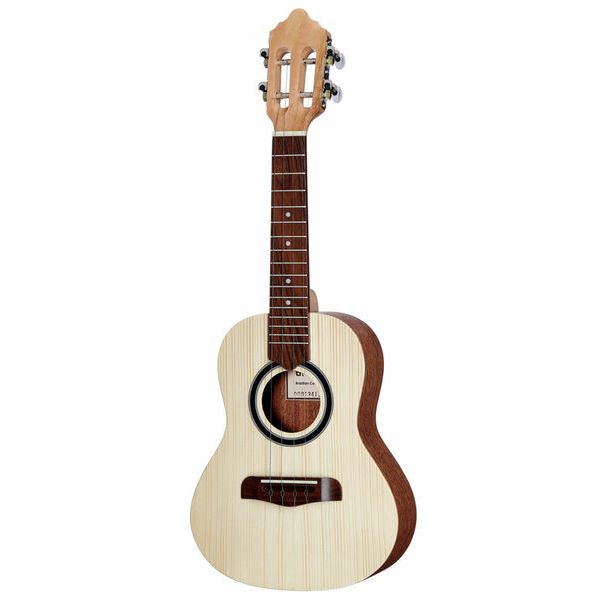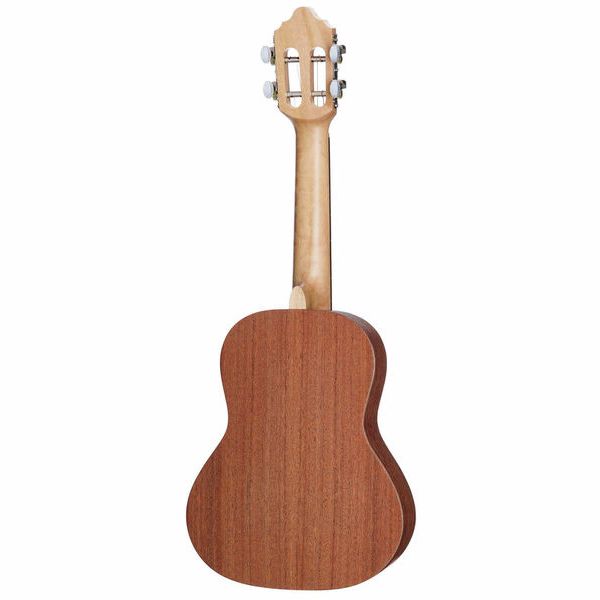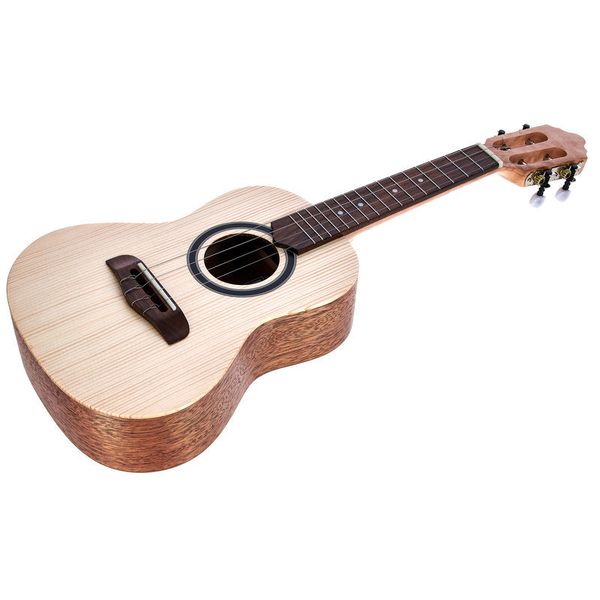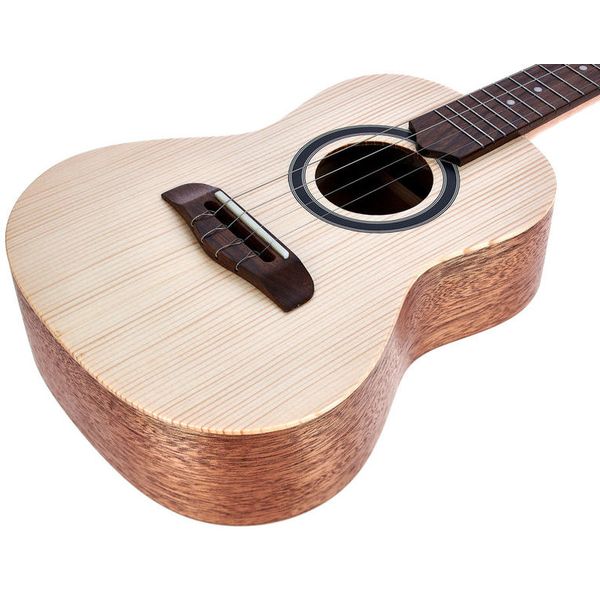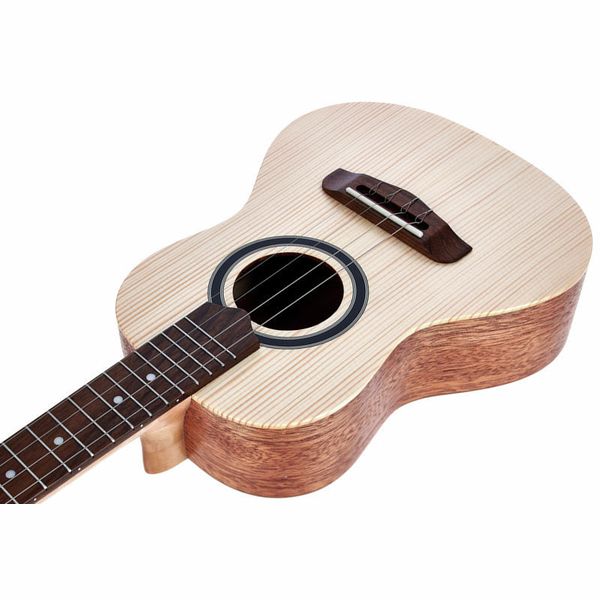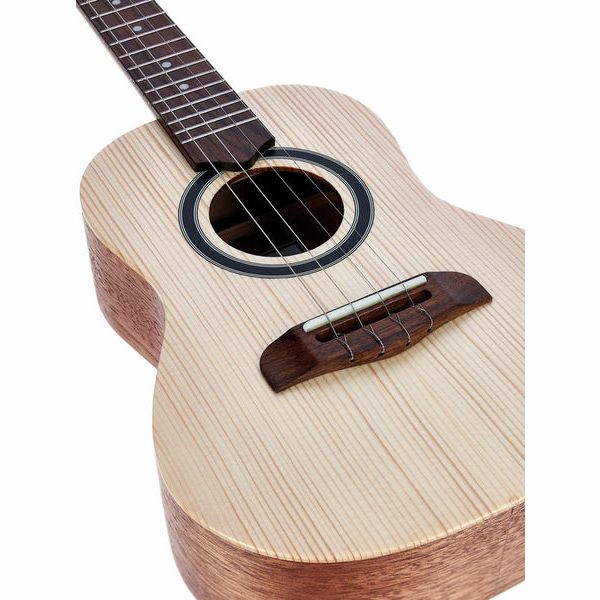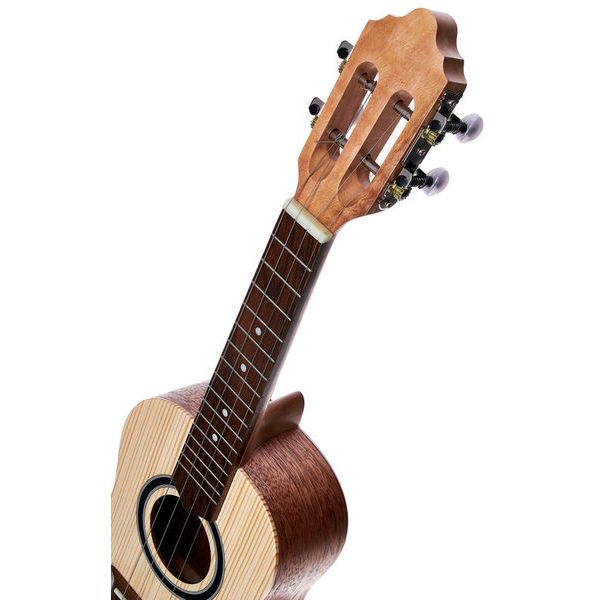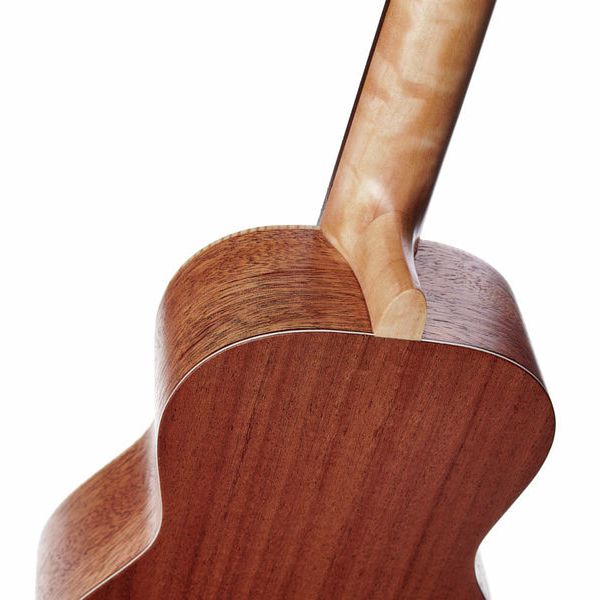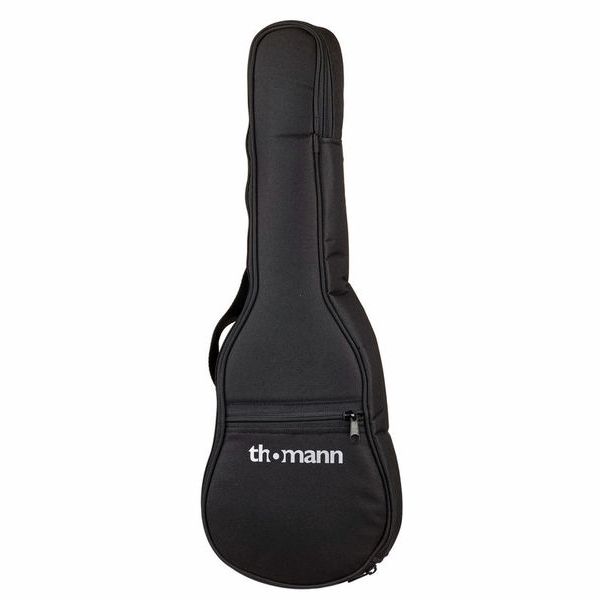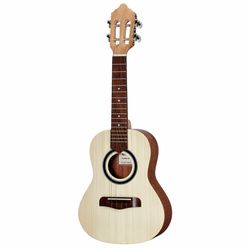Die Verarbeitung des Cavaquinho ist weitgehend in Ordnung. Von außen betrachtet kann man nichts daran aussetzen, allerdings offenbart der Blick in das Schallloch, dass die Verarbeitung eben nur äußerlich sauber ist. Im Inneren ist der Boden nicht glatt gehobelt und an einigen Stellen quillt der Leim hervor. Aber gut, wie ein Instrument von Innen aussieht ist wohl auch nicht so wichtig.
Der Klang ist auch in Ordnung, gerade in den Tiefen natürlich etwas dünn, aber das ist bei solch einem kleinen Instrument wohl unvermeidlich. Auf alle Fälle klingt der Cavaquinho deutlich anders als eine Ukulele oder eine Mandoline und ermöglicht mir damit klangliche Abwechslung.
Wie bei allen Cavaquinhos ist die Saitenlage ziemlich niedrig, was das Greifen erleichtert, aber beim kräftigen Anschlagen teilweise gewisse schnarrende Nebengeräusche verursacht. Und um beim Solo-Spielen gegen zwei Begleitgitarren anzukommen, muss man schon ziemlich kräftig zulangen; ich spiele den Cavaquinho dazu wie in Brasilien üblich mit Plektrum. Wenn man ganze Akkorde spielt, ist auch ein Anschlag mit den Fingernägeln möglich, beim einstimmigen Melodiespiel klingt mir persönlich das Zupfen aber doch etwas zu dünn.
Die Bundreinheit des Cavaquinho ist weitgehend in Ordnung, wenn man präzise greift, was bei dem kleinen Griffbrett gar nicht so einfach ist. Allerdings wird die Intonation bei Verwendung eines Capos schnell ziemlich falsch, da wäre dann Nachstimmen nötig.
Wer sich für die Anschaffung eines Cavaquinho interessiert, fragt sich vielleicht, was denn der Unterschied zwischen einem portugiesischen und einem brasilianischen Cavaquinho ist. Nun, bei dem brasilianischen ist der Korpus etwas größer. Der wesentliche Unterschied besteht aber in den Saiten und der Stimmung. Bei der portugiesischen Variante ist die Stimmung d`` g` h` d``, wobei alle Saiten die gleiche Dicke besitzen. Die brasilianische Variante ist d` g` h` d`` gestimmt, damit ist der Tonumfang nach unten eine Quarte größer. Außerdem sind die Saiten entsprechend der unterschiedlichen Stimmung auch verschieden dick, was mir irgendwie sinnvoller erscheint.
Zu dem brasilianischen Cavaquinho gibt es keine Tasche; allerdings ist der Korpus so groß wie der einer Konzertukulele und der Hals etwas kürzer, wodurch Taschen und Koffer für Konzertukelelen im Allgemeinen passen sollten.





